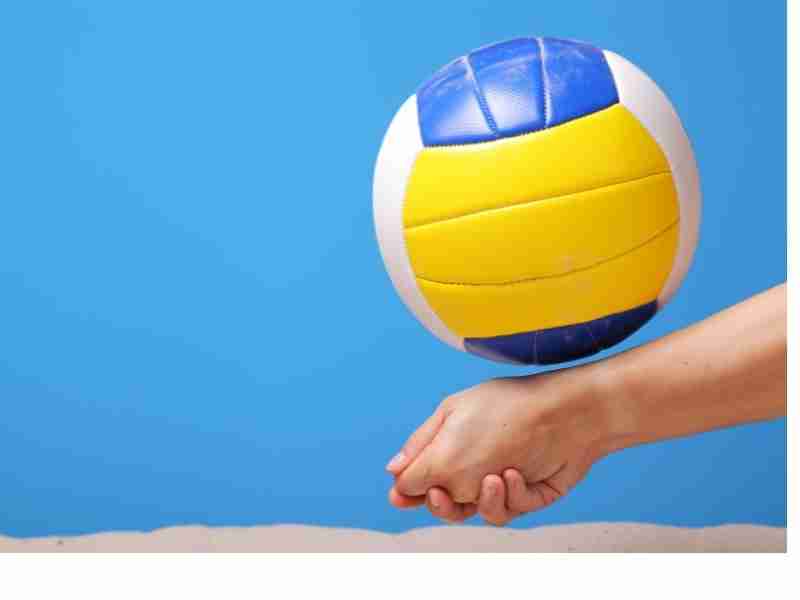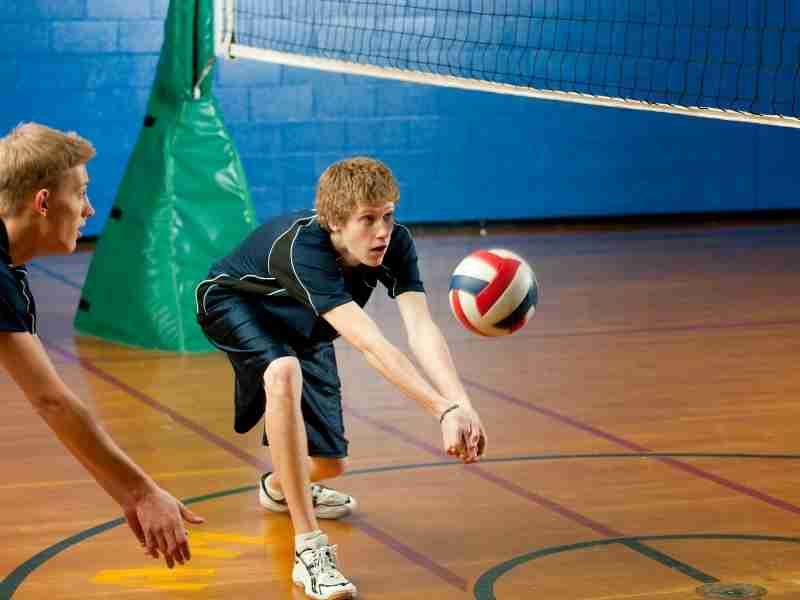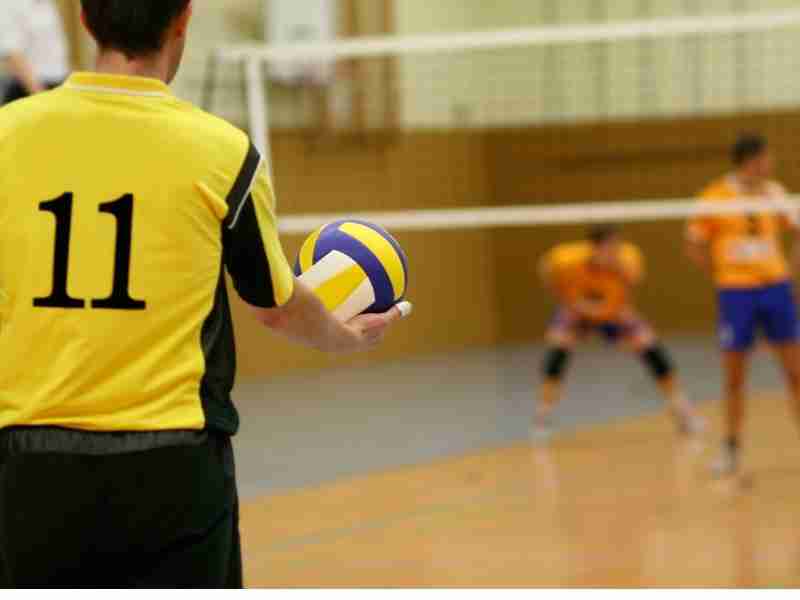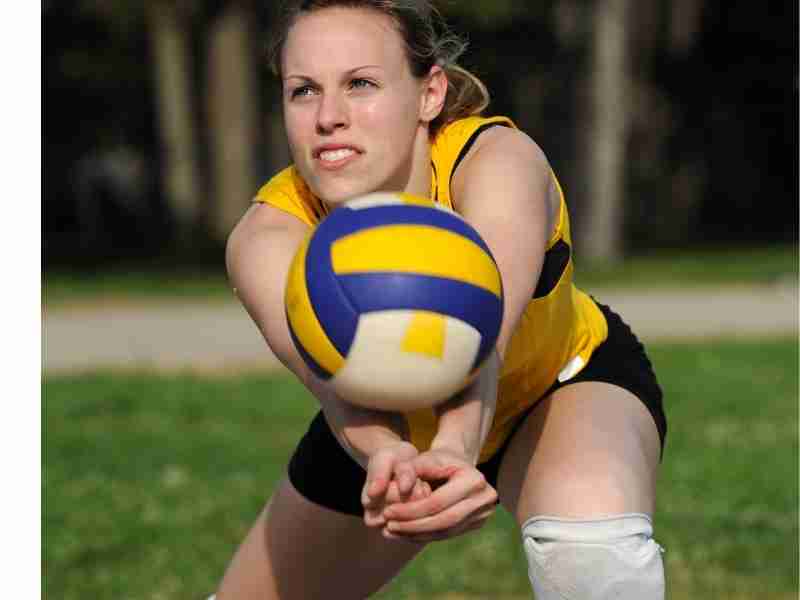
Volleyball involves a variety of skills. In this regard, how to dig in volleyball? ball ranks high. Everyone on the team needs to learn how to dig in Volleyball. If you can dig, your squad will continue to compete in the rally, and you’ll get another shot to make your case.
A spike is a shot where the Volleyball hits the ground before bouncing back into the air. Anyone can and should be able to hit a point, so keep reading to see some fundamental drills for improving your spiking.
A vital talent for any volleyball player to master, the dig can mean the difference between winning and losing. Your goal should be to prevent the ball from touching the ground whenever the opposing team makes an attack.
When the opposing team’s ball is driven particularly hard, the defender will pass it to their teammates.
Your arms and base should be in the same places as when passing. The ball is hit downward from a height over the net, which makes all the difference. The average passing distance is 30 feet, below the net’s size. Quick thinking and improvisation are required.
Comparison of Passing to Digging
However, In Volleyball, not all passes in Volleyball are digs. Digs occur after an opponent serves or spikes the ball. A dig may not always be a perfect pass to a teammate, but it’s important to remember that the goal of an offense isn’t necessary to set up a teammate for a scoring chance; instead, it’s to maintain possession of the ball so that the team can continue playing.[1]
Who Is The Best Digger?
Libero, Ideally, is usually the best at digging on the team. Because liberos are short, they can dig best.
What is Dig?
The dig may be played as a setter or receiver, but it is often played as a serve reception.
4 Types of Digs in Volleyball
The consideration of different Types of digs takes into account the different body positions:
Regular dig:
This dig is performed with the arms in front of the body.
Side dig:
Performed with the arms on the side of the body.
Diving Dig:
The player must “dive” onto the ground to execute the dig.
Digging Drills
Digging To Catch (Great beginner drill)
The coach must prepare for this exercise by tapping a box four feet by four feet anywhere on the playing surface. Then, tape a larger box around it, making it approximately 8 feet by 8 feet in size, to make a target almost like a bullseye.
The players will begin the round standing in a line around eight to ten feet away from the box. They will start digging from the back of the court and aim for a target area with which the setter can work.
The digger is responsible for digging the ball so that they may catch their own dig as close to the target as feasible when the coach hits it. This game contains a total of four different degrees of consequence.
- They will receive three points if they can find their own dig in the smaller box.
- The successful capture of their offense in the large box is worth two points.
- Getting their dig in one of the spots outside the box is worth one point.
- Can’t seem to dig them out of their hole!
The game can continue either until one player obtains a predetermined score or until every player is eliminated from contention. Coaches need to emphasize the importance of players going high enough on their digs so that their teammates can make effective plays on the ball.
Putting in Work on the Wall (Solo Drill)
As part of this exercise, you will throw the ball against the wall, hit it, and last, dig your rebound. When you first start out, you shouldn’t hit the ball extremely hard because it will be difficult to pick up the rebound, but as you get the feel of it, you should start pushing yourself further.
Adjust the pace, angle, and height of your throws and hits to keep your opponent guessing.
The Endless Digging
For this dig, there must be a total of 5 participants:
1 setter performing duties in the middle front position
2 batters batting at positions that are considered to be outside the box
2 defenders who take up positions in the rear row
The coach may hit during the practice to demonstrate the proper technique. The hitters are positioned so that the setter may practice setting to specific areas, but instead of hitting the ball to those spots, they are hitting it to the defenders on the same side of the court at 75% of their average speed. The entire practice is conducted on a single side of the court; however, your team can divide into halves and carry out a similar routine.
A hitter starts the action by hitting the defenders, who dig towards the setter in the center of the court. The setter has the option of setting either of the hitters.
The defenders must make constant adjustments back and forth and pick who will receive the ball. This play will keep running in a loop if the digs are compelling and the sets are adequate.
Dig, Tip, Chase
The exercise begins with the players lining up at the endline. On the same side of the court as the hitter, the coach will feed the ball to them while they are standing with their back to the net.
The feeder will start by hitting the player with a ball to dig, and the player will need to return a pass that can be played. The hitter will then tip the ball, forcing the player to get closer to the ball in order to dig up another playable pass.
Finally, the batter will pretend to miss-hit the ball and send it wide to either side. The player will then race after the ball to rescue it and attempt to hit it back into play.
Rapid Fire Digging
If you have two-hitter boxes, you should set them up on the same side of the court, positions 2 and 4, immediately behind the attack line, for this practice. You should not do this drill if you do not have two-hitter boxes. On the opposite side of the court, the defensive players will organize themselves into two deep lines.
When the coach gives the beginning signal, the hitters hit a hard ball to the fielders so they may get up. Make an effort to create a fast pace, and use as many shakers as possible so that it stays moving.
The next step up: Playing in between the two lines of defensive players is a position that can be filled by your libero(s) and/or defensive specialists. Make it so that the batters take turns batting so that the libero is forced to play each ball. Again, ensure that the tempo is kept at a high level so that participants are forced to make snap judgments and complete as many repetitions as possible.
How Do You Perform a Dig?

If off-side, a defender stays low and tries to stop the attacker from scoring by popping the ball straight up, holding his arms outstretched to keep them away from the ball.
After a spike, Volleyball players move/her feet quickly or dive close to the Volleyball trajectories and stretch one or both arms out to keep the Volleyball in play. If successful, Volleyball should remain playable. If completed successfully, the ball should remain playable.
Stance
Maintaining a low stance when preparing to throw a punch is essential. If you’re lower than you are, you should be able to receive a serve. You need to balance your weight evenly on both feet to jump high. When you’re ready to jump, bend at the hips and knees and then push off from your heels to propel yourself into the air. As you land, extend your legs back behind you and bring them together again.
Positioning
Get into position according to the defense your team is playing. It is your job to advance the ball in your half of the court. Keep your eyes on the ball and be prepared for anything, whether a setter dump, a tip, a hard-driven ball, or a high shot off a blocker’s hands.
Watch the Hitter
After the batter has set the ball, you should observe their body language for hints about where the ball will be struck. Get your shoulder in front of the hitters! You ought to consider ascending for the prize if the block is solid. If not, hold your ground, enter the hole, and brace yourself for a hammer of a ball.
The Goal
Before the ball arrives, bring your arms together, clasp your hands together, and establish a flat platform to dig the ball. Try to restrain your impulsive arm movements. Cross your left arm over your request to field a ball hit to your right as if you were making a catch. Avoid making a circle with your hands on your chest and reaching out to catch the ball. The ball, despite being driven harder, is still under your control.
Sometimes, it is impossible to get to the ball with two hands. Getting the ball into the air is more crucial than using flawless form in that situation. A teammate can get the ball if you create a fist and reach for it with one arm.
Overhand Dig
If the ball is hit hard and far off the block, there is a good chance you will have to stretch above your head to collect it. You may send the ball soaring into the air and toward the net without losing control with a backhand strike. Overhand digs are more challenging to maintain control over than regular digs, although they can be employed if necessary.
Diving
Diving may be your best option if you need to get to the ball quickly and can’t get there by walking. Play through the ball with your arms and legs extended wide and at an angle back toward the setter at the net. Learning how to dive without the ball will help prevent injuring your hip, knees, or elbows when you land. You want to glide rather than thump to the floor when you land, so dive out rather than down.
Diving shouldn’t hurt as long as you do it properly.
FAQ’s
What is the best way to watch a game?
If you’re observing, you might be able to see where the Volleyball will go before it’s even been hit.
What are the rules for setters?
Next, once the ball has left the setter’s hand, you should be able to tell which player will get the ball.
What is the best way to pass?
Being low allows you to move quickly and easily into an excellent passing situation.
What is a dig in Volleyball?
A dig is a defensive move to prevent the ball from hitting the floor when it’s shot at the opponent’s end of the field.
What is the most crucial thing you can do to keep your team alive?
You mustn’t let the ball go out of bounds.
What is the difference between a bump and an attack?
Randomly sending a bump up in the sky puts your team in a weaker situation than they would be if they were trying to attack.
What should I do in Dig?
If you’re doing this correctly, you need to allow your arms to give slightly, so they don’t get too powerful when hitting the ball.
What are the best defensive tactics?
Of course, hitters can change their swings at the last second and choose to tip or float a ball instead of hitting it with a normal topspin swing, but most of the time, they can tell where the ball is headed before deciding to do so.
What if I’m not ready?
Other times, by being prepared, you will be in an ideal situation if one of your teammates has just barely made a play playable.
What’s Coming?
That player on the opposite court is about to do their best to hit a powerful shot at the opponent’s feet.
What should I do?
When that player makes physical touch, you must move in whatever direction you have to adjust so that you can intercept him.






